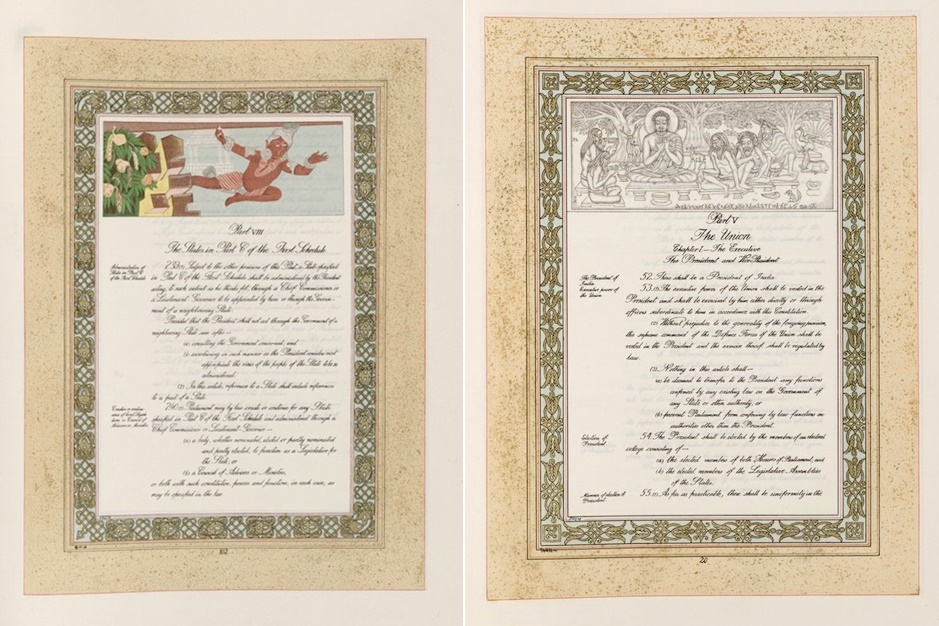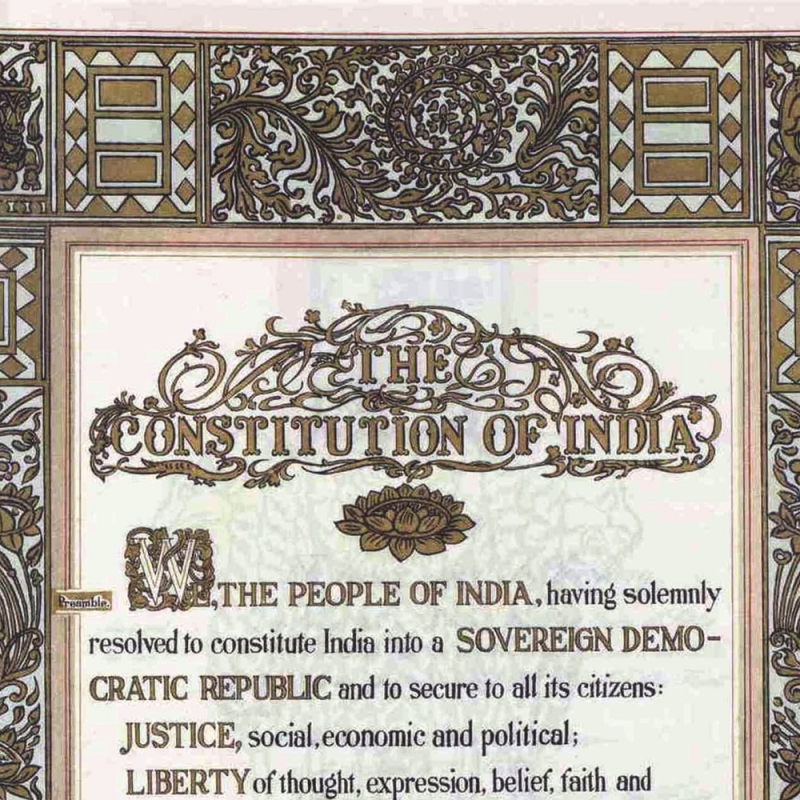The Handmade Paper Institute in Pune has the unique distinction of providing the paper on which India’s Constitution was first written. It even supplied silk-based paper for Rajiv and Sonia Gandhi’s wedding. We explore its vibrant history over 80-plus years. (Photo Courtesy: World Digital Library)
In the centre of Pune, just next to the Agriculture College on KB Joshi Road, sits a pretty little shop with the choicest handmade papers in varied colours of the rainbow. It’s known to be a favourite among the stationery-savvy. However, unknown to most, the quaint shop owned by the Pune Handmade Paper Institute (HMPI) is part of an organisation that pioneered India’s handmade paper industry; and which has the unique distinction of providing the paper on which India’s Constitution was first written.
Related | How India Votes: History of Elections During the British Rule
Made of treated 100% cotton rags, the paper supplied for the most important official document of Independent India was handmade right here in Pune. The 90–110 gsm (gram per sq. m) bond paper was selected for its ‘quality and durability—it lasts over 100 years,’ says Sanjeev Naik, a retired lecturer from the institute that is still internally referred to as HMPI. Though the Constitution is known as much for its artwork by the legendary Nandalal Bose and his team of student illustrators from Viswabharati, Santiniketan, the thicker 180–250 gsm drawing paper was not chosen by HMPI because of its limited lifespan.


The choice of paper and its supplier for the Indian Constitution was a well-thought decision as the institute draws from the values of the Swadeshi Movement, with blessings from none other than Mahatma Gandhi. Scientist KB Joshi (on whom the institute’s road has been named) was working in an oil mill in Newasa, Maharashtra, in the 1930s when he met with Gandhi. According to CV Puntambelkar, who worked with HMPI for 39 years, Joshi was already working on paper produced from cotton linters and rags, which he showed Gandhi as an alternative to the paper being imported at the time. The latter, averse to machines being used for paper production, encouraged Joshi to work on handmade paper instead. Hence in 1936, the land in Pune was taken on lease from the agricultural department for 25 years, apparently for the princely rent of Re 1 per annum, though no lease document exists from the time certifying the amount. Joshi was later joined by agriculturist GH Gondhalekar, and the Bombay Khadi Samiti was set up.
Kagazi people—as those previously working in paper mills before the British shut them were known—from surrounding areas were rounded up and trained, informs Naik, who retired from HMPI in 2018 as Industry Inspector after 34 long years. Both he and Puntambelkar talk about how the organisation came up as an important feature of Gandhi’s call for Swadeshi goods and industries, providing employment and a much-needed alternative to the imports. On August 1, 1940, Jawaharlal Nehru inaugurated the institute and commercial production of handmade paper started. Under the All India Khadi and Village Industries Association, the institute started management and technical training courses in 1956 in addition to the research and paper production.
Also read | Nine Museums for the Patriotic Indian
Most of the paper produced by the HMPI is supplied to various universities across the country as ‘degree paper’ with their watermark, says HMPI’s former director Upendra Karambelkar, as well as for official letterheads for ministers. The rest is sold in the in-house shop—both as paper and as stationery. Interestingly, the institute also supplied the paper for the wedding/reception cards of Rajiv and Sonia Gandhi in 1968. It was a silk mixture paper made in Junnar village, says Puntambelkar.

Over its many decades of research, the division has developed over 4,500 varieties of handmade paper, including those made from materials such as banana fibre, bagasse, cotton stalk and jute. Trials have been made using currency paper waste and acid-free drawing paper. These divisions all share space in this part of Shivajinagar, along with an auditorium that hosts seminars and workshops for alternative means of making paper, other than wood pulp. There are also several old paper-making machines for those interested. Renovated and revived to coincide with the 150th birth anniversary of Gandhi in 2019, the walls are peppered with swanky information slides on recycling and handmade paper processes and benefits. Currently, the institute is a space for both ideation and nostalgia, as most heritage sites should be.
The article was also published on Scroll.in.












